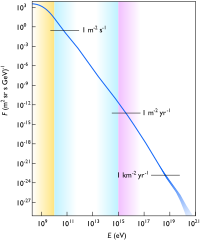
Photo from wikipedia
Tryptophan and phenylakylamines (PAAs) are important biomolecules, which are involved in a myriad of processes. These molecules have been experimentally reported to exhibit N–H+…π interactions in their protonated form; however,… Click to show full abstract
Tryptophan and phenylakylamines (PAAs) are important biomolecules, which are involved in a myriad of processes. These molecules have been experimentally reported to exhibit N–H+…π interactions in their protonated form; however, this has not been theoretically investigated in detail. Generally, such interactions are observed in diverse biological systems, and their evaluation would be useful for understanding protein folding and functioning. Therefore, in this study, we have described the N–H+…π interactions of the abovementioned classes of molecules using the Quantum Theory of Atoms In Molecules (QTAIM), Natural Bond Orbital (NBO), and Non-Covalent Interaction (NCI) analyses. The results of our N–H+…π interaction energy calculations were consistent with the experimental energies derived from the redshift of the vibrational stretches. The energy values obtained using the QTAIM-based Espinosa’s approach provided a relatively better result than similar approaches previously reported in the literature. Furthermore, we observed that the N–H+…π interaction energy in tryptophan is weaker than the resonance-assisted hydrogen bond energy of the N–H+…O=C interactions of its three most stable conformers accessible at room temperature. In contrast, the strength of the N–H+…π interaction in PAAs was observed to increase with increasing alkyl lateral chain length. The increased flexibility of longer chains increases the distance between nitrogen and the phenyl ring without disturbing the N–H+…π interaction.
Journal Title: Theoretical Chemistry Accounts
Year Published: 2020
Link to full text (if available)
Share on Social Media: Sign Up to like & get
recommendations!